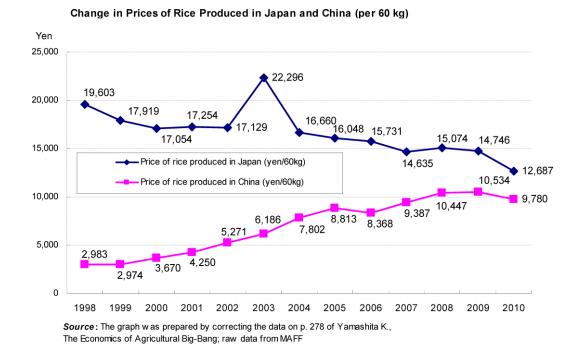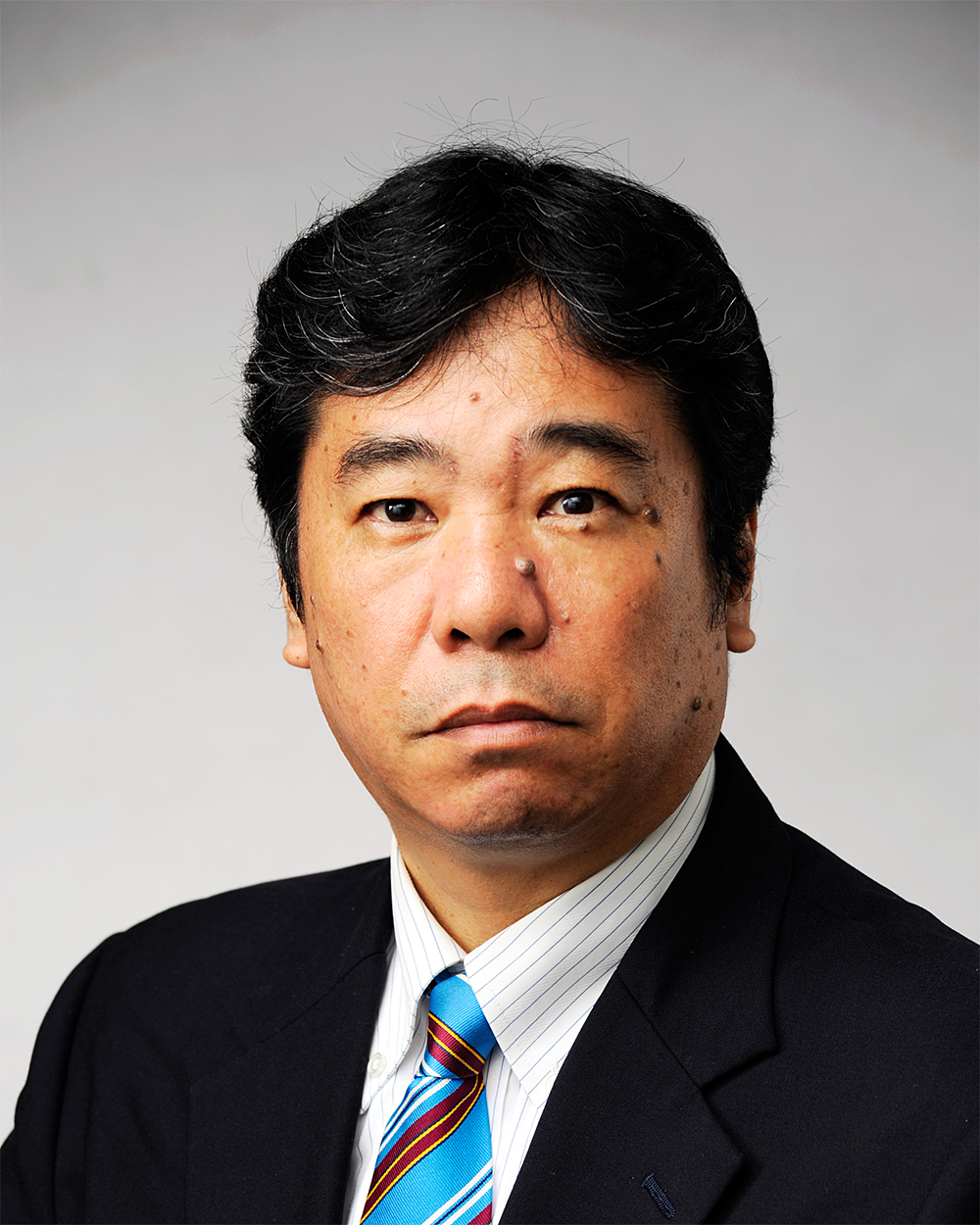JAPAN SHOULD MOVE QUICKLY TO PARTICIPATE IN THE TPP NEGOTIATIONS
Disciplining big powers’ actions in line with international economic rules

Yamashita Kazuhito
China has emerged in the East Asia region, with its GDP now exceeding Japan’s. It has also attempted to use its military to protect its maritime interests, stirring conflict with neighboring countries.
This situation raises concern that China could implement measures that threaten both Japanese and global economic activities, such as by banning exports of rare earths and other natural resources, imposing restrictions on investment and resorting to other means backed by its tremendous national strength. In the same way the World Trade Organization (WTO) dispute-settlement procedures nullified one-sided measures such as Article 301 of the United States Trade Act, a framework is needed for disciplining actions by China pursuant to the rules to which numerous countries have agreed.
These reasons suggest why it would be effective for Japan to participate in the Trans-Pacific Partnership (TPP) negotiations along with other developed countries of the Asia-Pacific region, including the United States, Australia, New Zealand and Singapore, take the initiative in establishing advanced rules on regional trade and investment, and present them to China and other countries. If TPP participants expanded to include most of the countries and areas of the Asia-Pacific region, it is likely that Chinese companies would see it as in their best interest to comply with the rules. In other words, it is desirable to first establish the TPP among countries capable of complying with the high-level rules and then to incorporate China, in order to establish a Free Trade Area of the Asia-Pacific (FTAAP) for the dual purposes of economic development and political stability in the overall region. This is necessary not only for controlling China’s actions, but also those of the United States, where the benefits of certain industries can easily influence national trade policies.
Having Japan’s interests reflected in the global rules through the TPP
Attempts are being made in the TPP negotiations to promote market liberalization to a level above that promised by WTO member countries, by means such as eliminating tariffs on goods and greater liberalization of service trades. Efforts are also being made to establish new rules and discipline in areas the WTO has failed to control, such as investment, competition, trade and the environment and trade and labor.
In the General Agreement on Tariffs and Trade (GATT) Uruguay Round negotiations, Japan was a member of the “core four” group (the United States, the European Union, Japan and Canada), but these days Japan has barely secured its position following the United States, the European Union, China, India and Brazil. Japan’s position in the WTO has declined, rendering it less likely that its claims will be accommodated. In TPP negotiations, however, Japan could be influential alongside the United States, considering its economic size.
The TPP is an open and expansive economic partnership, and the rules agreed to within it are expected to serve as trade and investment rules governing wide regions, such as Asia-Pacific Economic Cooperation (APEC) countries. Also notable is that countries like Australia, New Zealand, and Singapore, which have exercised influence in the WTO beyond their respective economic capabilities due to their English proficiency and higher level of education, are TPP member countries, in addition to the United States, which has led WTO negotiations so far. The TPP is becoming an important convention both in terms of quantity and quality. Therefore, if the TPP establishes so-called WTO+ rules which encompass areas not yet under WTO scope or further deepen existing WTO rules, they are certain to be used as a reference when the WTO tries to establish them.
If TPP rules are brought into the WTO, Japan can reflect its interests in the worldwide discipline and rules by participating in the TPP talks and having its interests reflected there. This is why Japan promptly needs to take part in the TPP negotiations. It can only gain limited benefits if it participates just before negotiations conclude. Though opposition to the TPP on the grounds it would destroy the Japanese economy is poorly founded, if it is in fact valid then Japan should take active part since these negotiations are expected to establish trade and investment rules for the Asia-Pacific region, and for the world, and so it should strive to eliminate rules problematic for the Japanese economy.
Japan has made a top priority of maintaining many agricultural products as exempt from tariff elimination, not only in WTO negotiations but also in the bilateral economic partnerships it has concluded. Since Japan has consistently stuck with a defensive stance in negotiations on agricultural products, it has become difficult for it to elicit compromises from other countries that it deserves in other areas. By shifting from protecting agricultural products via tariffs and prices to protecting them through fiscal policy, as in the United States and the European Union, and demonstrating that through the TPP Japan is capable of concluding high-quality agreements for eliminating all product tariffs, it could improve its diplomatic abilities in trade issues.
Some argue that it would be sufficient to leave rice as an exception in the TPP, just as in the GATT Uruguay Round negotiations Japan adopted a position of saving only rice, which has a great number of producers and wields strong political power. This led to an addition to the minimum access tariff-rate quota as compensation (minimum access that was 5% of consumption if a non-tariff barrier was transformed into tariff (this is called tariffication) in 1995 was increased to 8% by resorting to special treatment of tariffication), which was one of the factors that led to a decline in the rice production industry. In 1999, Japan inevitably shifted to tariffication due to the overly heavy minimum access. (The minimum access has been 7.2% as a penalty for delay in tariffication.) If Japan did not change the stance in negotiations, it would have no choice but to pay for compensation in the TPP negotiations as well. This would apply first to rice if Japan wishes to treat it as an exception, and to other agricultural products if this is not sufficient, and even further to areas other than agriculture as seen in lowered food safety standards regarding BSE (bovine spongiform encephalopathy) and other concerns, and deregulation of service trade.
Importance as a growth strategy
There is a concern that Japan’s decreased working-age population and aging of society will seriously affect productivity in its economy. If companies globalize through trade and investment, the technologies and energy of other countries can be imported to revitalize the innovation necessary for economic growth. Analyses have shown that corporate productivity rises by 2% by exporting products, 2% by making direct overseas investment and 3% by conducting research and development overseas. Other analyses have demonstrated that investment in research and development in Japan by overseas companies has enhanced the related industry productivity by 4%.
Economic partnership with Asian countries is certainly important. However, from the above viewpoint, Japan’s participation in the TPP negotiations, which include advanced countries in the Asia-Pacific region such as the United States, Australia, New Zealand and Singapore, is more effective for revitalizing national innovation.
Eliminating tariffs is not enough on its own for expanding overseas production and technological networks. It is more effective, through the TPP and other economic partnerships, to make trade rules more transparent, simplify trade procedures, build harmony with international standards, promote smoother migration of engineers and businesspeople over national boundaries for facilitating smoother trade, and encourage investment and prohibit unnecessary restrictions relating to investment. Significant results are expected, for instance, if measures for facilitating trade are incorporated into the TPP, such as electronic certificates, unification of contact points at trade-related organizations and as a rule having products made in the same region distributed without tariffs.
Considerations for those affected by the Great East Japan Earthquake
Many people’s incomes have fallen in the wake of the global economic recession triggered by the 2008 financial crisis and following the Great East Japan Earthquake. High prices of domestic agricultural products have placed a heavy burden on low-income consumers.
Talk of trade liberalization emphasized profits from production enjoyed by exporting industries and damage suffered by affected industries competing with imported products. Opposition to the TPP commonly espouses the attitude of protecting vested benefits, asserting that industries such as agriculture and medical treatment, which have been protected by regulations, are affected. However, we should never forget that consumers receive significant benefits from trade liberalization.
Protection of agriculture amounting to 4 trillion yen (OECD estimate), which has forced consumers to pay prices for agricultural products in excess of international prices, is equivalent to an additional 1.6% of consumption tax. In other words, Japanese citizens have unknowingly borne a consumption tax amount of 6.6% (1.6% above 5.0%). This is an unclear and regressive burden.
Customers have borne this 4 trillion yen for domestic agricultural products alone. Duties and charges are levied on overseas agricultural products, making their prices balance with those of domestic agricultural products. As such, consumers are made to pay the difference between these prices. The actual amount borne by consumers exceeds 4 trillion yen. Taking wheat as an example, consumers have assumed the same burden for domestic wheat, which accounts for only 14% of all wheat consumed as foreign-made wheat, which accounts for 86% of all wheat consumed. Replacing the amount borne by consumers with respect to domestic agricultural products with direct payment by fiscal burden would remove the burdens for foreign-made agricultural products without the need for replacement by fiscal burden. A Japanese shift to political measures based on a fiscal burden will decrease the amount borne by the general public.
If the TTP is realized and food prices decline, consumers may benefit from both price cuts and increased consumption, which would be good news for those who lost their jobs and incomes due to the Lehman Brothers collapse or the Great East Japan Earthquake.
Some argue that if food prices decline, consumers will restrain their purchasing and this will aggravate deflation. However, unlike durable goods such as cars and televisions, consumers will not restrain from purchasing food, which is a daily necessity.
Agriculture is the area that more strongly needs the TPP
Since agriculture is conducted on a smaller size in Japan compared to the United States and Australia, some assert that it is expensive and less competitive. In terms of farm area per farming family, if Japan is 1, then the EU is 9, the United States is 100, and Australia is 1,902.
It is true that costs decrease as production size grows, but size is not the only important factor. If the above assertion proved true, the United States, which is the world’s largest agricultural exporter, cannot compete with Australia because its scale is 1/19 that of Australia. This assertion does not consider the differences in crops being produced. The United States mainly produces wheat, soybeans and corn, while Australia mainly produces livestock fed with pasture grass. Japan cannot appropriately be compared with these countries since it mainly produces rice. Threats regarding Japanese rice production mainly come from China, but the size of farming families in China is only one-third that of Japan. Also notable is that even for the same crop great differences are found in yield per area and quality. Since the yield of wheat in France is triple that in the United States, a farming family owning 100 hectares of farmland in France is more efficient than one in the United States with 200 hectares.
There are japonica and indica varieties of rice, and huge differences in quality are present just in the japonica variety. Within Japan also, prices differ by 1.7-1.8 times even among the koshihikari breed cultivated in the Uonuma region of Niigata Prefecture and other production areas. In the international markets as well, rice produced in Japan is highly regarded. Today in Hong Kong, the wholesale price (per kilogram) when purchased from a trading company of Japanese koshihikari rice is 380 yen, while the same breed of rice produced in California is 240 yen, in China is 150 yen, and the general japonica variety produced in China is 100 yen. Comparing low-quality rice produced in other countries with rice produced in Japan is like comparing a light vehicle to a luxury Mercedes.
As shown in the figure, the difference in prices of rice produced in Japan and that of similar quality produced in China (imported by imposing the minimum access) has reduced significantly in the past decade. Today, the difference in prices of domestically sold rice in China and the imported price has fallen below 30%. Since the price of rice produced in Japan at around 13,000 yen was realized by limiting the supply through the policy of trimming rice production, the price would fall to 9,000 yen if the policy were abolished; prices of rice produced in Japan and China would reverse their positions.
It has been asserted that the TPP would greatly damage agriculture in Japan, yet even if prices of agricultural products declined, producers would not be harmed if subsidies were paid directly to agricultural producers for maintaining production, as in the United States and the EU. This allows maintaining of agriculture’s multi-faceted functions other than agricultural production, including cultivation of water resources and prevention of floods. If prices drop unexpectedly, the amount paid directly can be increased. If an unexpected increase in imported products affects domestic industries, safeguard measures can be incorporated in the TPP conventions.
Regarding rice production, farming families engaged in additional professions would start selling their farmland if rice prices went down due to abolishing the policy for trimming rice production. If subsidies were directly paid only to farming families exclusively engaged in rice production, their ability to rent land would rise, causing farmland to accumulate in these families and their scale of production to rise. If the yield rose when total consumption is constant, the area of rice paddies needed for rice production would decrease, which would expand the area of paddies where rice was not produced, causing the amount of subsidies for paddies set aside for rice production to increase. This was disliked by the Ministry of Finance. Efforts to breed improvement for enhancing yield would no longer be made. If the yield of rice in Japan came close to that in California, the rice production cost of 6,000 yen by large-scale farming families would fall to 4,300 yen, which is close to the price of rice produced in Thailand. If expanding the farming scale and increasing the yield further reduced costs, Japan’s rice industry could be converted to an exporting industry. While the domestic agricultural market shrinks in the age of population decline, agriculture in Japan can only erode unless export is promoted by eliminating tariffs and non-tariff barriers of trading partner countries. Negotiations for trade liberalization are indispensable for Japanese agriculture as well.
Translated from “TPP Kosho ni soki ni sanka subeshi (Japan should promptly participate in Trans-Pacific Partnership Agreement negotiation),”Diplomacy (Gaiko), Vol.9 (September 2011), pp. 122-127. (Courtesy of Toshishuppan, Publishers)





